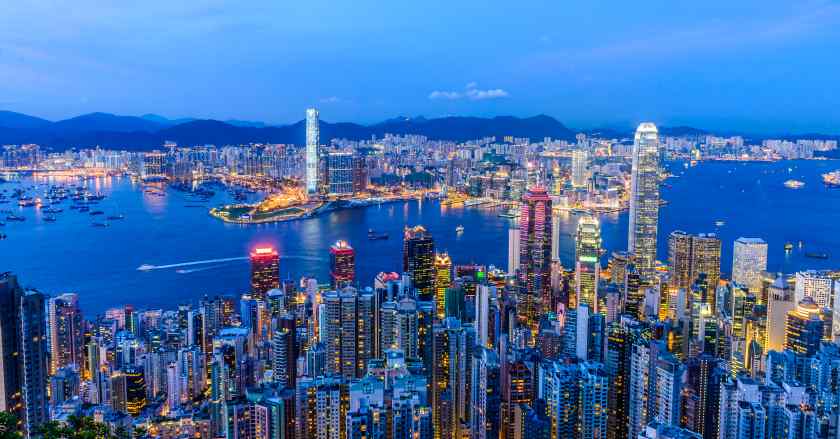Sunday, July 27, 2025
After years of upheaval from political unrest and the pandemic, Hong Kong has a rare chance to reinvent its tourism industry. And as the city continues to recover its visitors, the task now will be to make sure growth in tourism is balanced, sustainable and benefits tourists, as well as those who call the city their home. Hong Kong has restructured its tourism policy to imbue it with experiences and community participation, and preserve the local culture, to prevent the jam-packed, cash-splashing side effects that used to cast an ominous shadow over locals of the city.
From 2012 to 2018, there was a travel boom in Hong Kong, largely fueled by the influx of mainland Chinese visitors. Home to shopping paradise and other iconic landmarks, the city drew in more than 65 million visitors in 2018. But this tourism influx also came with huge social costs, from clogged public spaces to long lines and the rapid commercialisation of some areas to serve primarily mainland shoppers. The cost of these shifts was often borne by the city’s local population, who complained about crowded MTR stations and a loss of neighborhood flavor.
The Rise and Fall of a “Single-Source” Tourism Model
The majority of Hong Kong’s tourism during this time frame was from the mainland, with approximately 78 percent of visitors coming from across the border. The economic rationale was clear enough increased retail sales and higher rental incomes but it was achieved at a heavy social price. Crowding emerged as the major problem, with commercial hubs swamped locals struggled to satisfy an ever-increasing need for products and services to meet tourist interests.
But with tourism grinding to a halt in 2019 amid social unrest, exacerbated by the pandemic, the industry has had some space to reconsider its stance. As borders reopened, tourists returned to Hong Kong, but there is a visible change in the kinds of travelers. The pivot is away from high-spending luxury shoppers to younger price-conscious travelers in search of authentic experiences not mass-market products. This change implies the end of the era of luxury shopping and the beginning of a new cycle in Hong Kong’s tourism.
Reviving Tourism with a Focus on Local Experience
A new Hong Kong tourism strategy offers experience-based activities that residents and visitors alike can enjoy, without putting too much pressure on some neighborhoods. Rather than just advertising shopping, the city is now advertising its unique cultural and natural offerings, including street food tours, local markets and experiences in historical neighbourhoods like Tai O and Sham Shui Po.
One of the principal examples of this new thrust can be seen in the flurry of interest that the Happy Wednesday races at Happy Valley has generated among visitors looking for something more than the usual tourist fare. Other less-mainstream experiences like roaming around Chungking Mansions, celebrated for its rich multicultural scene, or basking in the food and vibe of Sham Shui Po, are increasingly attracting tourists who want to soak in Hong Kong’s colorful cultural tapestry.
This pivot to place-specific offerings like unique food experiences and cultural immersions — will help to spread the tourism wealth across the city more evenly, easing pressure on overwhelmed hot spots and offering visitors a more authentic taste of Hong Kong.
Managing Overcrowding and Supporting Sustainable Growth
Having learned from past mistakes, Hong Kong’s tourism authorities have since taken a more competitive and sustainable approach to growth. Attention has turned to crowd control, so that the throngs of tourists are deterred from sticking to the same few districts and attractions. The city is also trying to stimulate demand for events and experiences that complement global travel trends, such as eco-destinations like the Mandai Wildlife Reserve in Singapore or hosting marquee events that have major international appeal.
One of the largest shifts to emerge is Hong Kong’s push for sustainable tourism. This also means balancing the desires of the tourists with the welfare of communities. For example, local districts and grass-roots communities are co-operating closely with tourism regulators to mark areas where we can locate the stress in the city and avoid growing tourism at the cost of quality of life for citizens.
How other major world capitals are managing overcrowding, including one approach to temporarily hosting the Mona Lisa, in the Louvre Museum in Paris, and in Milan. Hong Kong’s vision is to be able to take the same approach to its native population and to visitors.
Shifting Visitor Profiles and Expanding Tourism Offerings
As tourist arrivals are rebounding positively, in particular non-mainland arrivals, the recovery of Hong Kong tourism is looking optimistic. Non-mainland visitor numbers had surged 18 per cent in the first five months of the year, while the cruise business had also rebounded vigorously and is set to pay more than HK$1 billion into the economy in 2023. They are part of this new breed of visitors many of them more budget-minded, and in search of more-localized experiences who are doing much to transform Hong Kong into a destination that is about experiences other than shopping.
Aside from experiential travel, community experience is also something important in Hong Kong’s tourism industry. Helping local businesses many of which are small and family run to benefit from tourism whilst keeping true to themselves will be a key part of the city’s future approach.
Looking Forward: Hong Kong’s Balanced Tourism Future
While the prosperous region looks ahead, the challenge will be to develop tourism sensibly, in harmony with the locals and with local flavor. Although tourism is not one of the leading contributors to the GDP of Hong Kong, it is an important concept to shape the world’s views on the perception to the city internationally. Well-managed tourism, emphasizing on conservation of traditions and creating engagement with the local community which provides a variety of experiential opportunities, might be a way to make sure that Hong Kong is up to tourists’ expectations without losing its cultural identity.
(Source: Hong Kong Tourism Board, Hong Kong Government)



